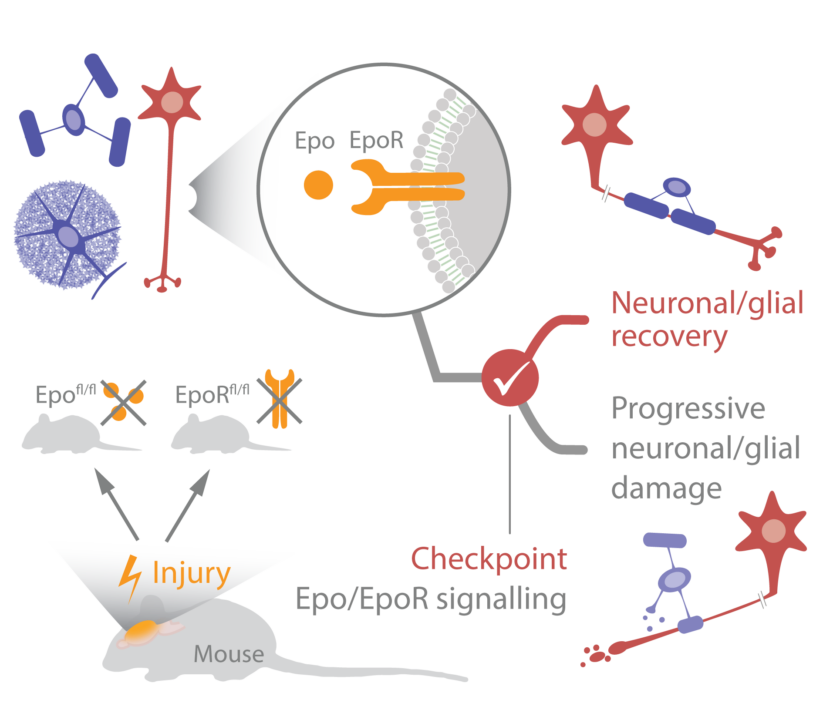Background: Erythropoietin and its receptor are also expressed in the brain, where the recombinant growth factor rhEPO, a clinically safe drug, has shown neuroprotective effects that are poorly understood and independent of erythropoiesis.
Hypothesis: Acute and chronic injuries induce the expression of ligand and receptor in the adult nervous system which stimulate like rhEPO neuronal and glial developmental and protective processes.
Strategy: We will use new transgenic tools and advanced mouse phenotyping to systematically dissect the role of brain intrinsic erythropoietin signalling as a checkpoint in the recovery from injury and disease.

Summary
Recombinant human erythropoietin (rhEPO) is a candidate drug for brain diseases, in addition to its well-known use in anemic patients. In clinical settings, rhEPO can provide neuroprotection and promote functional recovery following acute brain injury (preterm infants, stroke, neurotrauma) and certain chronic conditions (multiple sclerosis, schizophrenia), and these effects are independent of erythropoiesis. When administered at high doses to wildtype mice, rhEPO drives adult neurogenesis, dendritic spine growth, oligodendrogenesis and myelination. However, there is still a major gap in our mechanistic understanding of EPO action in the brain, owing to its pleiotropic cellular effects and the lack of genetic mouse models. Moreover, the injury-induced upregulation of both EPO and its receptor (EPOR) in the brain suggests that disease conditions themselves change cell signalling thereby regaining access to developmental programs. In this tandem project, a clinical research group with a long-standing track record in EPO and neuroprotection (H.E.) joins forces with a neurogenetics group that has profound expertise in cellular neuroscience (K.A.N). Using novel transgenic reporter mice, we will determine EPO and EPOR expression patterns in neuronal and glial subpopulations in a range of murine disease models, including minor traumatic brain injury. Using new and unpublished EPO and EPOR floxed mice, we will then create region-specific and cell type-specific mutants in selected disease models to determine how the alteration of brain EPO/EPOR signalling affects neuronal and glial gene expression, brain function, recovery, and resilience. Using high-end imaging, electron microscopic and advanced behavioural analysis tools, this project will define brain EPO/EPOR signalling as a new checkpoint for developmental and regenerative processes, with relevance to recovery in human brain injury and neuropsychiatric diseases.





